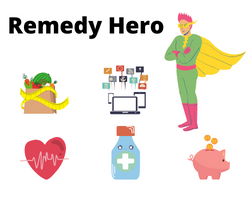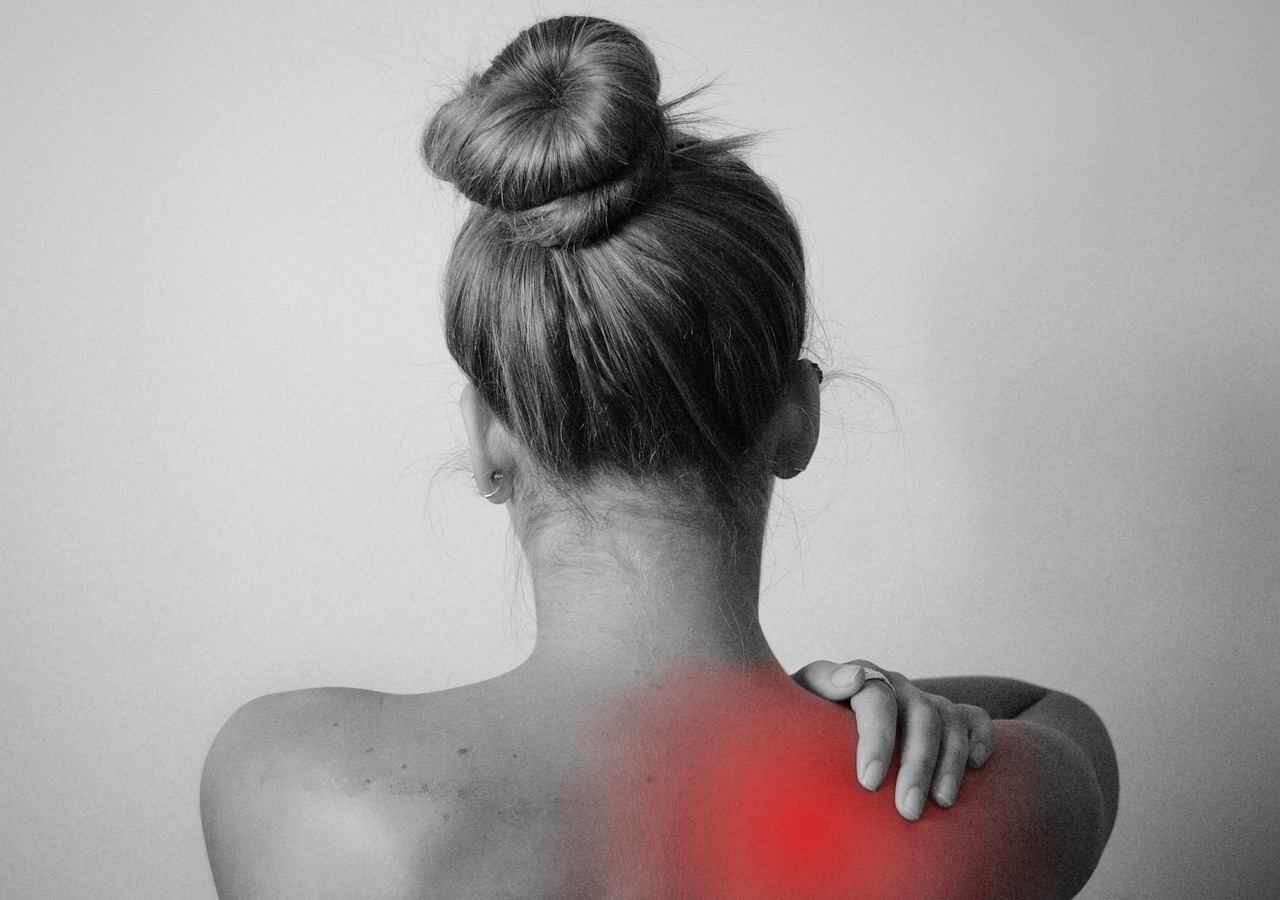In this step-by-step guide, we will walk you through various home remedies that can effectively relieve muscle pain and soreness at home. We understand that muscle pain can be a common issue, whether it’s due to intense workouts or everyday strain. That’s why we have compiled a range of proven methods that you can easily try at home.
First, we will discuss the importance of rest and relaxation for muscle recovery. We will explain how giving your muscles time to heal can greatly reduce pain and soreness. Next, we will delve into the benefits of applying heat or cold therapy to alleviate muscle discomfort. We will guide you on when to use each method and how to safely apply them.
Stretching exercises are also an essential part of relieving muscle pain and soreness. We will provide you with a series of simple stretches that target specific muscles, helping to alleviate tension and promote flexibility.
Additionally, we will discuss the benefits of using over-the-counter pain relievers and topical creams. We will explain how these products can provide temporary relief for muscle pain and soreness. However, we will also emphasize the importance of using them responsibly and following the recommended dosage.
Finally, we will explore the benefits of alternative therapies such as massage and foam rolling. We will guide you on how to perform self-massage techniques and use a foam roller effectively to relieve muscle tension.
By following the step-by-step instructions in this guide, you will be equipped with a variety of home remedies to relieve muscle pain and soreness. Remember, it’s important to listen to your body and give yourself the rest and care you need for a quick recovery.
Identify the source of pain and soreness
To effectively address pain and soreness, it is crucial to first identify the specific muscles or areas that are causing the discomfort. Follow these steps to determine the source of your pain:
- Pay attention to your body: Start by being mindful of any sensations or discomfort you are experiencing. Take note of the location and intensity of the pain or soreness. Is it a dull ache or a sharp pain? Is it localized or does it radiate to other areas?
- Palpate the area: Gently use your fingers to explore the affected area. Press lightly and feel for any tender or tight spots. You may feel knots or areas of increased sensitivity.
- Observe movement limitations: Be aware of any limitations in your range of motion or any movement that exacerbates the pain. Note if certain activities or positions worsen the discomfort.
- Consider recent activities: Reflect on any recent physical activities, exercises, or movements that may have contributed to the pain or soreness. Did you engage in any repetitive or strenuous activities? Have you recently started a new exercise routine?
- Consult a diagram or anatomy resource: If you are unsure about the specific muscles in the area, consult a diagram or anatomy resource to help you identify the muscles involved. This can provide a clearer understanding of the potential source of your pain.
By carefully observing your body, palpating the affected area, noting movement limitations, considering recent activities, and referring to anatomical resources if needed, you can successfully identify the source of your pain and soreness. This knowledge will help guide you in choosing the most appropriate remedies and treatments for effective relief.
RICE method: Rest, Ice, Compression, Elevation
Rest: First, make sure to rest the affected area. Avoid any activities that may further strain or aggravate the muscles. Resting allows the body to heal and prevents further damage.
Ice: Apply ice to the affected area to reduce inflammation and swelling. Fill a bag with ice cubes or use a gel pack and place it on the sore muscles for about 15-20 minutes. Make sure to wrap the ice pack in a thin towel to protect the skin from direct contact with the ice.
Compression: Use compression to support the muscles and reduce swelling. Wrap an elastic bandage or compression sleeve around the affected area firmly, but not too tight. This helps to improve blood flow and provides stability to the injured muscles.
Elevation: Elevate the injured area to help minimize swelling. Raise the affected limb above the level of your heart, if possible. You can prop it up on a pillow or cushion. Keeping the area elevated helps to reduce fluid buildup and promotes faster healing.
Remember to repeat the RICE method several times a day, especially in the first 48-72 hours after the injury. If the pain or swelling persists or worsens, it’s important to seek professional medical advice.
Applying heat to the affected muscles can be an effective way to relax them and provide relief from pain. There are several methods you can use to experience the benefits of heat therapy.
- Heating pad: Start by plugging in the heating pad and adjusting the temperature to a comfortable level. Place a thin cloth or towel between your skin and the heating pad to prevent burns. Then, apply the heating pad to the affected area and let the heat penetrate the muscles for about 15-20 minutes. Remember to never fall asleep with a heating pad on.
- Hot water bottle: Fill a hot water bottle with hot (not boiling) water. Make sure the cap is securely closed and check for any leaks. Wrap the hot water bottle in a towel to prevent direct contact with your skin. Place it on the affected area and allow the warmth to soothe your muscles. Keep it in place for 15-20 minutes.
- Warm bath: Fill a bathtub with comfortably warm water. You can add some Epsom salt or essential oils for added relaxation. Carefully lower yourself into the bath, ensuring that the water covers the affected muscles. Stay in the bath for about 15-20 minutes, allowing the warmth to penetrate your muscles and provide relief.
Remember to always use heat therapy cautiously and avoid excessive heat or prolonged exposure. If you have any concerns or if the pain persists, it’s best to consult with a healthcare professional.
Gentle stretching and exercises
Engaging in gentle stretching and exercises can have numerous benefits for our muscles and overall well-being. By promoting blood flow to the muscles, these activities help nourish the tissues, improve flexibility, and reduce stiffness. Additionally, incorporating gentle exercises into our routine can aid in speeding up the recovery process after physical activities or injuries.
To ensure a safe and effective experience, it is important to follow these guidelines:
- Start with a warm-up: Begin by performing some light aerobic exercises such as walking or cycling for a few minutes. This helps increase body temperature and prepares the muscles for stretching and exercise.
- Listen to your body: Pay attention to how your body feels during the activities. If you experience pain or discomfort, it is crucial to stop and modify the exercise or stretch accordingly. Pushing through pain can lead to further injury.
- Ease into it: Start with gentle stretches that target the major muscle groups. Hold each stretch for 15-30 seconds and remember to breathe deeply throughout. Avoid bouncing or jerking movements, as they can strain the muscles.
- Gradually progress: As your body becomes more comfortable with the stretches, you can gradually increase the duration and intensity. However, it is essential to respect your body’s limits and avoid overexertion.
- Incorporate balance and strength exercises: Alongside stretching, include exercises that improve balance and strengthen the muscles. This can be achieved through activities like yoga, Pilates, or resistance training. Start with simple movements and gradually add complexity.
- Cool down: After completing the stretching and exercises, take a few minutes to cool down. This can be done by performing some light stretches or engaging in a slow walk. Cooling down helps regulate heart rate and prevent dizziness or muscle cramps.
Remember, the key to reaping the benefits of gentle stretching and exercises lies in consistency. It is recommended to engage in these activities at least 2-3 times a week, but always consult with a healthcare professional before starting any new exercise program, especially if you have pre-existing medical conditions or injuries.
Consider using topical pain relievers such as creams, gels, or ointments that contain ingredients like menthol or capsaicin. These products can provide temporary relief by numbing the affected area or reducing inflammation.
To use a topical pain reliever, start by thoroughly cleaning and drying the affected area. Then, apply a small amount of the product directly onto the skin over the painful area. Gently massage it in using circular motions until it is absorbed. Be sure to follow the instructions on the packaging for the specific product you are using, as application methods and frequency may vary.
It is important to note that topical pain relievers should not be used on broken or irritated skin, and they should not be applied near the eyes, mouth, or other sensitive areas. Always wash your hands thoroughly after application to avoid accidentally transferring the product to other parts of your body.
Remember, topical pain relievers provide temporary relief and may not address the underlying cause of your pain. If your pain persists or worsens, it is important to consult a healthcare professional for further evaluation and guidance.
Rest and adequate sleep
Proper rest and sleep are crucial for muscle recovery. To ensure your body has enough time to heal, it is important to get adequate rest and maintain a regular sleep schedule.
- Prioritize rest: Make rest a priority by setting aside dedicated time for relaxation. This can include activities such as reading, taking a warm bath, or practicing mindfulness techniques.
- Create a sleep-friendly environment: Make sure your sleep environment is comfortable and conducive to rest. Keep your bedroom cool, dark, and quiet. Use comfortable bedding and pillows to promote better sleep.
- Stick to a sleep schedule: Establish a regular sleep schedule by going to bed and waking up at the same time every day, even on weekends. This helps regulate your body’s internal clock and promotes better sleep quality.
- Limit stimulating activities before bed: Avoid stimulating activities such as using electronic devices, watching television, or consuming caffeine close to bedtime. Instead, engage in relaxing activities like reading a book or listening to calming music.
- Practice good sleep hygiene: Develop habits that promote better sleep hygiene, such as avoiding heavy meals and alcohol before bedtime, and engaging in regular exercise during the day.
- Listen to your body: Pay attention to your body’s signals and give yourself permission to rest when needed. If you feel tired or fatigued, take a break and allow your muscles to recover.
By incorporating these practices into your routine, you can ensure that you give your body the rest and sleep it needs for optimal muscle recovery.
Takeaway Tips
In conclusion, we have outlined various methods to alleviate muscle pain and soreness at home. By incorporating these techniques into your routine, you can experience relief and promote faster recovery. However, it is crucial to seek medical advice if the discomfort persists or intensifies. Remember, taking care of your muscles is essential for overall well-being, so don’t hesitate to reach out to a healthcare professional for further evaluation and guidance.

